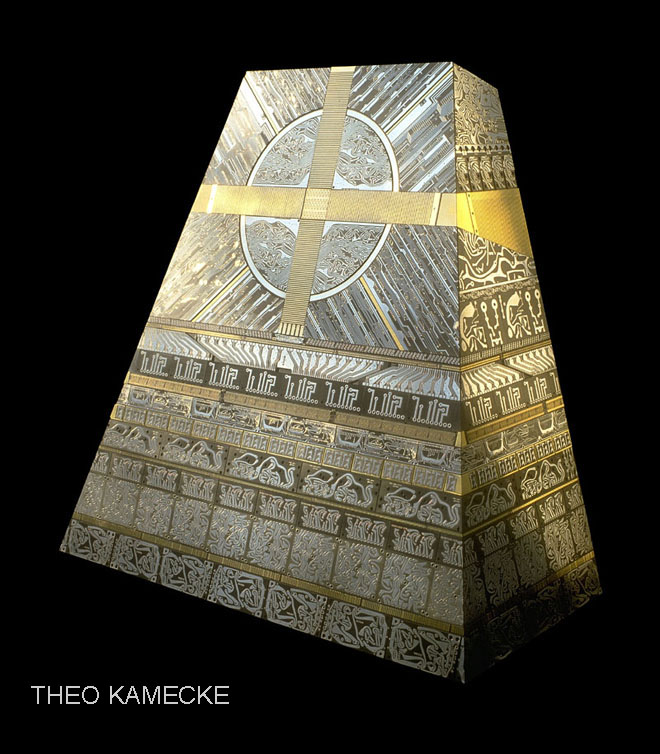When I decided to use circuitry as my material it was obvious to me that I would have to gather as large and varied a collection as possible from dozens of factories, so I could have the flexibility to create whatever I wished. The problem was that with thousands of pounds of circuit boards accumulating, I had to be able to easily find what was needed for each piece. A single circuit board takes up very little space and will store on shelves like books, but like a book in a library, is impossible to find unless you know where to look.
If you go into a bookstore you find things arranged by topic. I decided to arrange my circuits by aesthetic, which is the way I would use them, anyway. It became my library of visual language. If they had an oriental look to them, they were filed in Oriental; if the circuitry lines were serpentine they could be found in Serpentine. Circuitry patterns that called to mind grass or flowers or trees would go in Garden. The category Zoo is for circuits that suggest animals. I’ve tested this on visitors, pulling out a circuit board and asking them what they see. Often they get it right away, even though these circuits were never designed to be anything but electronic. I have a baboon, a frog on a throne, a monkey, an elephant, a horse, a toucan, fish, Insects and so on. A few other categories include Geometric, Candelabra, Mae West (big and curvy upstairs, slim in the waist), Formal, Mechanical, Bulbous, Maya and Chartres. These labels may not mean anything to someone else, but I almost always know where to look for something, and where to put it back.



